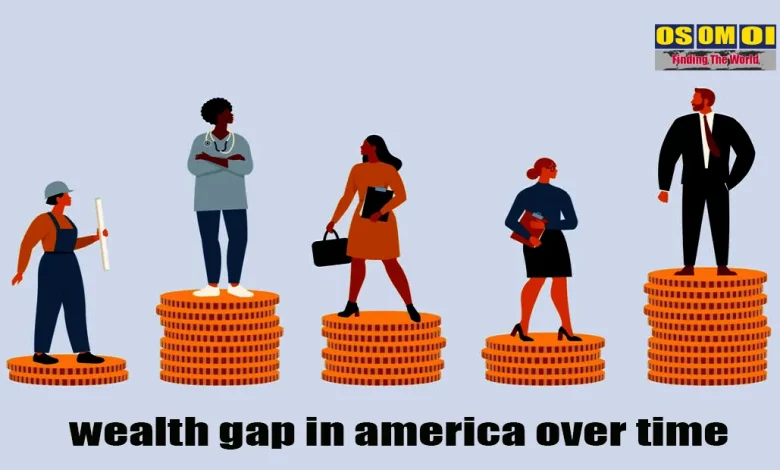wealth gap in america over time : greatest wealth inequality in history
wealth gap in america over time

wealth gap in america over time
The wealth gap in America has widened significantly over the past few decades, driven by a combination of economic policies, social dynamics, and market forces. Here’s an overview of how it has evolved over time:
1. Post-World War II to 1970s
This era is often called the “Great Compression,” where income and wealth inequality were relatively low compared to today. The combination of high taxes on the wealthy, strong unions, and robust economic growth helped distribute wealth more evenly. The middle class expanded, and the gap between rich and poor remained relatively stable. wealth gap in america over time
See More…… when does daylight savings time end permanently
- Key factors: High union membership, progressive taxation, a growing economy benefiting most sectors, and government programs like the GI Bill.
2. 1980s:
The wealth gap began widening in the 1980s due to policy changes, technological advancements, and globalization. Under President Ronald Reagan, tax cuts for the wealthy, deregulation, and anti-union policies became prominent. Trickle-down economics (the belief that reducing taxes on the wealthy would lead to overall economic growth) led to significant gains for the richest Americans, while wages for middle and lower-income groups stagnated. wealth gap in america over time
- Key factors: Tax cuts for the rich, deregulation, deindustrialization, and the weakening of labor unions.
3. 1990s:
The 1990s saw strong economic growth, particularly due to the tech boom. While there were gains across income groups, the wealth gap continued to widen. The stock market boomed, which disproportionately benefited wealthier Americans who were more likely to own stocks. Middle- and lower-income Americans saw smaller relative gains. wealth gap in america over time
-
Shop Now: koorui 27 inch qhd gaming monitor review,
-
Shop Now : graco 4ever dlx manual : very cheap price
-
Shop Now :Deep Collagen Overnight Mask 37gx4ea
-
Shop Now: More product : Amazon Fire HD 10 tablet
- Key factors: Stock market boom, globalization, and rising educational costs.
4. 2000s:
The early 2000s were marked by the dot-com crash, 9/11, and the housing bubble. By 2007, just before the Great Recession, wealth inequality had reached a high point. The recession exacerbated the gap, with many middle-class families losing their homes and savings, while the wealthy were better positioned to recover due to their diversified portfolios and government interventions like bank bailouts. wealth gap in america over time
- Key factors: Housing market crash, recession, financial deregulation, and federal bailouts.
5. 2010s:
The wealth gap grew further in the wake of the 2008 financial crisis. The recovery primarily benefited the wealthiest individuals, as stock markets rebounded much more quickly than wages or employment rates. Economic gains in the 2010s were concentrated among those with capital investments, while wage growth for most Americans remained sluggish. wealth gap in america over time
- Key factors: Slow wage recovery, rising costs of healthcare and education, and booming asset prices (stocks, real estate).
6. 2020s (Pandemic Era):
The COVID-19 pandemic brought further disparity. While millions lost jobs and faced financial insecurity, the stock market and housing markets surged, benefiting the wealthy. Government stimulus packages helped alleviate some immediate financial hardships, but longer-term impacts, such as job loss in lower-wage sectors and an accelerated shift to automation, have disproportionately affected lower-income workers. wealth gap in america over time
- Key factors: Pandemic disruptions, government stimulus, and rising asset prices (especially housing).
Key Statistics Over Time
- Top 1% wealth share: In 1980, the top 1% controlled around 22-23% of wealth. By 2021, this had grown to around 32-35%.
- Middle-class wealth: In the 1970s, the middle class owned a much larger share of total wealth. This has steadily declined, as the middle class’s share of wealth shrank to below 30% by the 2010s. wealth gap in america over time : Key Statistics Over Time
Key Drivers of the Wealth Gap
- Tax Policies: Tax cuts, especially for the wealthy and corporations, have widened the wealth gap. Capital gains, which are the primary source of income for the wealthy, are taxed at lower rates than regular income.
- Stagnant Wages: Wages for the middle and lower-income groups have not kept pace with productivity, especially since the 1970s. wealth gap in america over time
- Decline of Unions: The reduction in union membership has weakened bargaining power for workers, contributing to stagnant wages.
- Education Costs: The rising cost of education has placed a financial burden on the middle class and has led to widening disparities in earning potential. wealth gap in america over time
- Financialization: The growing importance of the stock market and financial markets has led to a concentration of wealth among those with capital investments.
Wealth Gap Today
The U.S. wealth gap in the 2020s is one of the highest among developed nations. The top 10% of households control around 70% of the nation’s wealth, while the bottom 50% hold only about 2% of it. The racial wealth gap also remains significant, with white households holding significantly more wealth than Black or Hispanic households. wealth gap in america over time : Wealth Gap Today
Future Outlook:
Unless there are significant policy shifts, such as progressive tax reforms, investment in public services, or measures to support wage growth, the wealth gap is expected to continue widening. wealth gap in america over time






